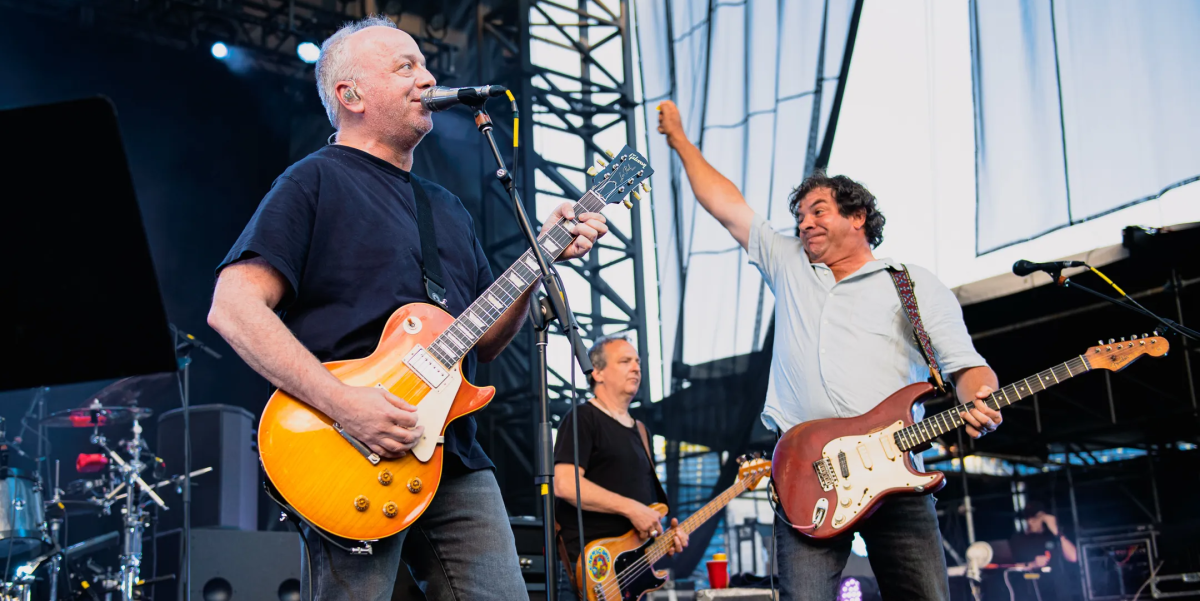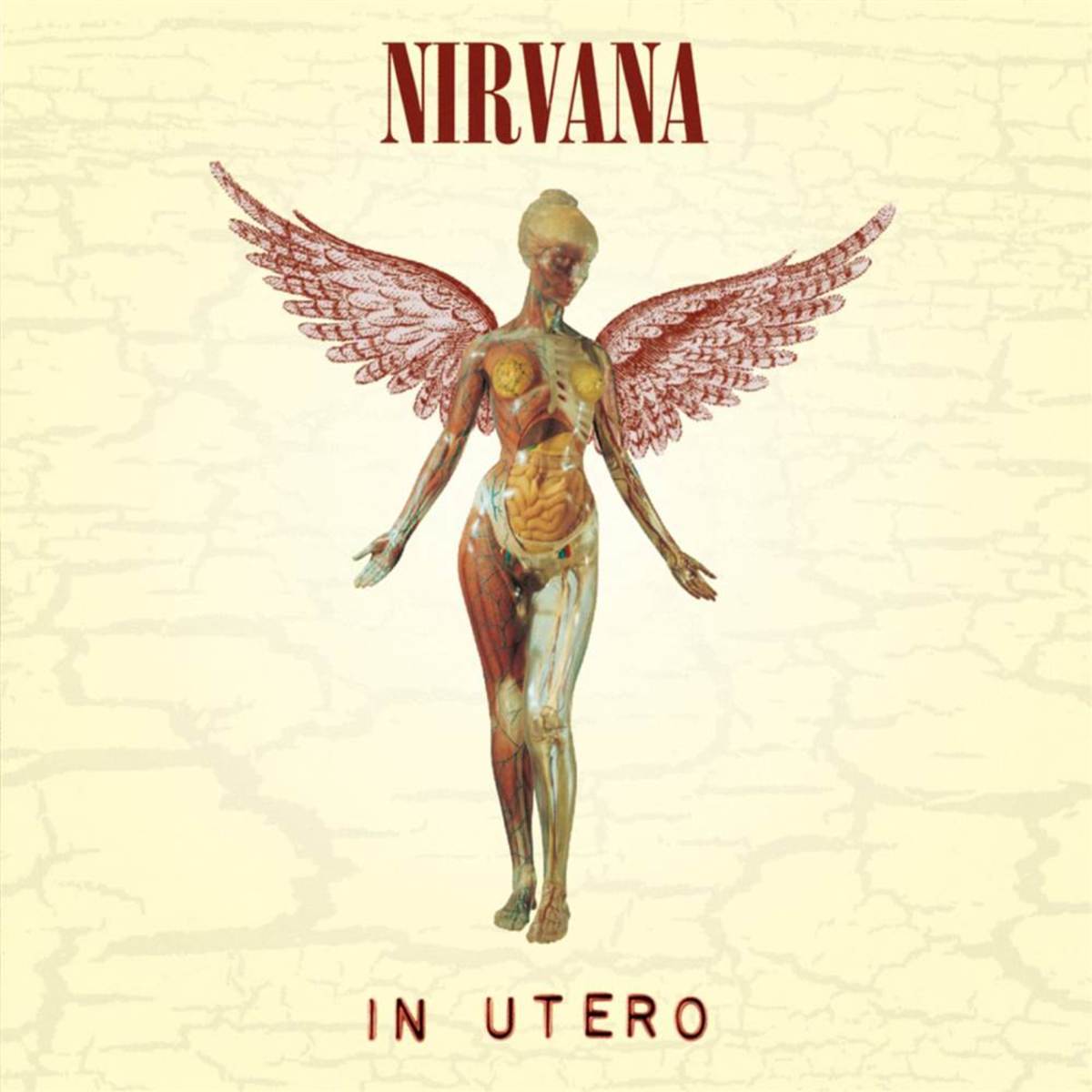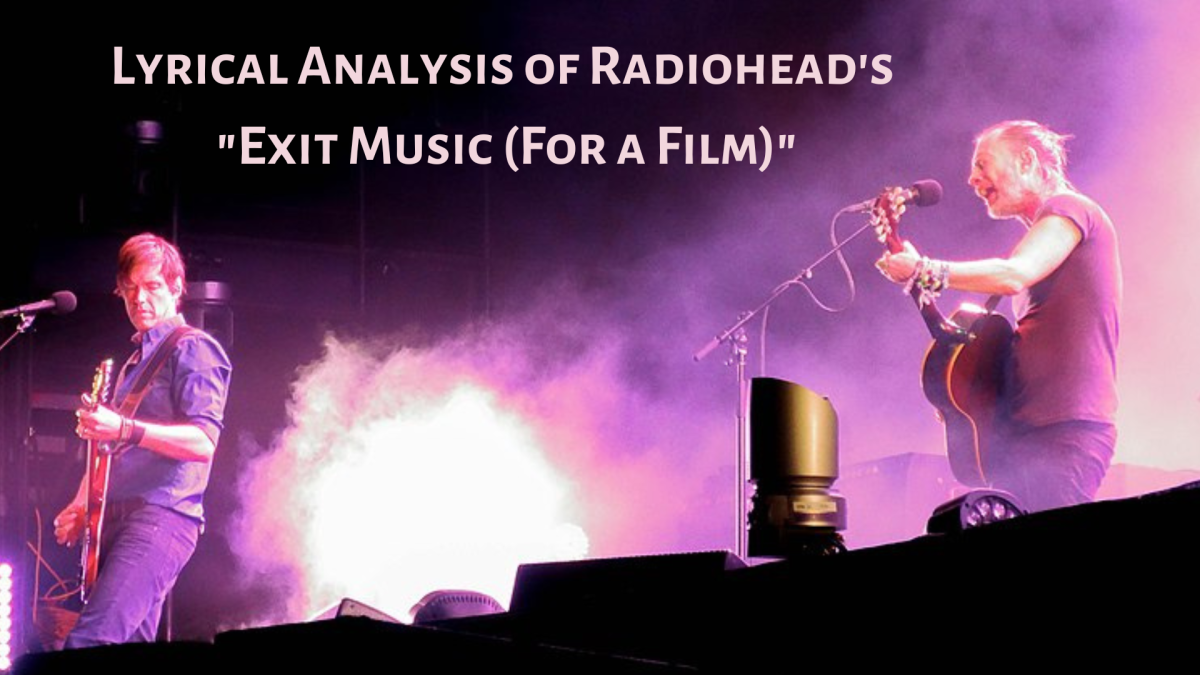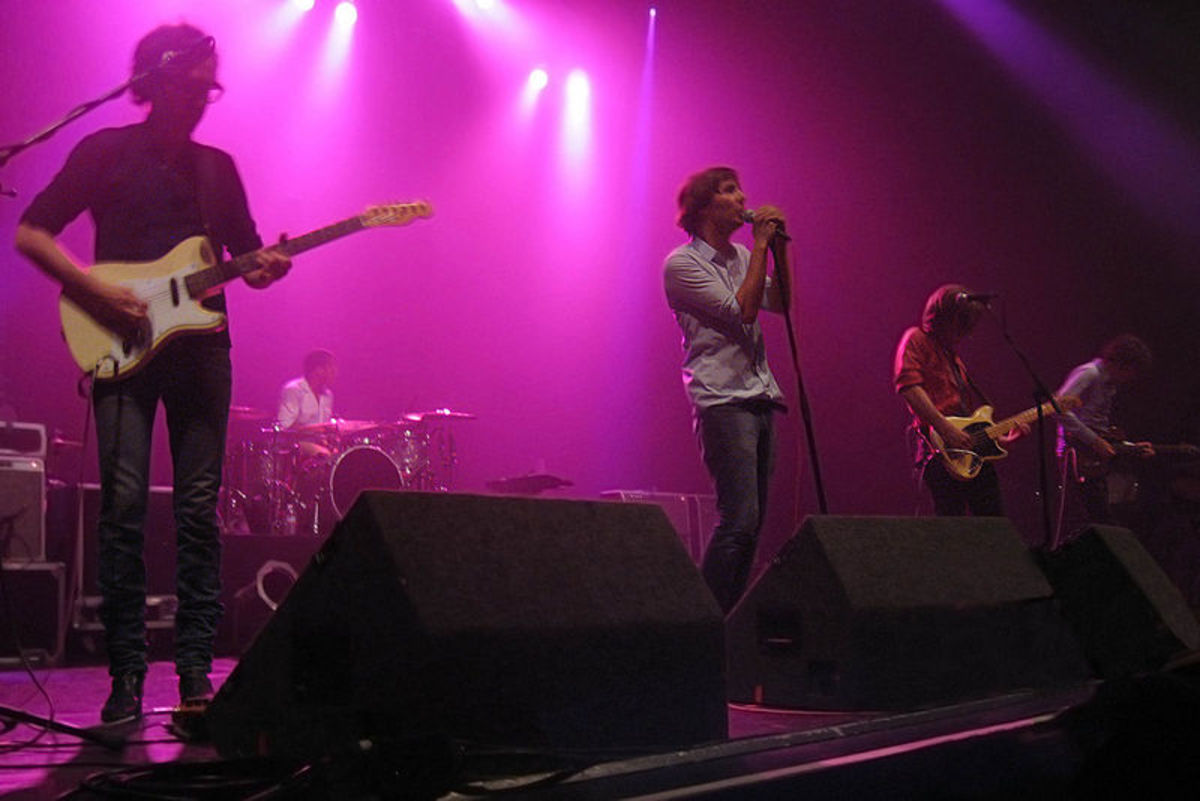Concept Album Corner - 'The Novelist' by Richard Swift
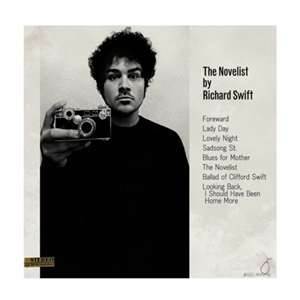
Any art form, no matter what the medium, requires a painstaking level of work, in the creative process as well as the production process. Each medium has a set of rules, some complex and some simple, that are meant to be followed and broken. Some forms perhaps require more tools than others (film, music), others may need bare basics (painting, writing), but regardless of how much more ‘complicated’ one is over another, each one is difficult in its own right. If one wishes to make ‘good’ art, it must be taken seriously and have a lot of time, thought, and effort put into it. Even in the end, the result might not be perfect. Some peers and critics will call your work lousy, pretentious, or some other amalgamation of things that aren’t quite nice to say. Every artist will have to bear this weight when working. Some might even fall into a sort of ‘creative constipation’, wondering, doubting, fearing if their work is worth any merit and if their work was even worth starting to begin with.
So let’s talk about Richard Swift. Specifically, his album, The Novelist.
Richard Swift is an independent American musician and producer. A duke among hipsters, very little information about Swift can be found (online, at least). Swift has been writing songs since the early 2000’s and producing music in his Oregon studio ‘National Freedom’. Swift’s style of music is often times influenced by folk, pop, and perhaps especially jazz, using more unusual sounding jingles in his work, mixing the songs of the old with the tunes of the new. Recently, as of 2009, Swift became a member of the American Indie Rock band, The Shins, as keyboardist, which is probably a good choice on The Shins’ part, I feel. Swift can safely be called an enigmatic man. Perhaps mostly because of how little there is to say about him (at least little that I know of).
His debut work, the double-album The Novelist and Walking Without Effort, was released in 2005, with The Novelist being comprised of a twenty-minute Rock Opera regarding a writer undergoing a writer’s block…sort of. Much like the art of writing itself, which can be heavily laced with doses of metaphor and symbolism, Swift tells this tale in a heavily metaphorical way, from the perspective of a man pining for a sweetheart in the same way an artist pines for a muse. A fine analogy on its own, though most if this is based upon audience interpretation. I do apologize for my lack of knowledge on the subject, but with little known about Swift himself, interpretation is really what the audience is left with. One would hardly guess that this could be a rock opera save for the songs’ tendency to overlap into each other. But various other reviews that I have found regarding the man have all stated and confirmed that The Novelist is indeed a rock opera. Let’s dive into the execution of the story.
1.) Forward – The album, fittingly enough, starts with a sort of musical prologue to set the scene for us. Starting with the rapid chirping of forest creatures, the opening strings and choral crooning are very reminiscent of a romance film of the 30’s and 40’s, echoing through a layer of static and vinyl scratchings, before ending with a far-off jazz band happily marches out of the scene. This, I think, sets the image of The Muse of this story. The music suggests something otherworldly, considering how out of place most of the music sounds compared to the rest of the album, yet also serene and natural.
2.) Lady Day – With a muffled drum machine and a distorted voice opening the song, Richard Swift echoes into the scene with the help of his piano and sets up the scene for the audience. Holiday in 1938. Here, the titular novelist sees the muse from afar, wondering if she could love him and be smitten with him and his creativity, to help him out with his ‘art’. Certainly one of the more pop-oriented songs on the album, Lady Day is relatively catchy and simple throughout, which I suppose can describe the album as a whole. Since this is the first track that introduces us to Swift’s singing voice, now might be a good time to mention that. Swift, as a singer, has what I call ‘The Hipster Croon’. Most of you might know what I’m talking about, but this is generally where the singer in question sounds like a straight Rufus Wainwright…or perhaps a very gay Tom Waits (early Waits, that is). Nevertheless, the song remains little more than okay.
3.) Lovely Night – As a sort of flip side to Lady Day, Lovely Night’s piano pounds away through the song along with a harmonica and bristly woodwinds, setting an image of a Cab Calloway-inspired cabaret evening of the Roaring Twenties. Throughout the album from here on, Swift’s voice is mostly covered by a thick film of the static noise from Forward. Here the novelist toils away, longing for The Muse that sparks such a powerful creativity in him, imagining how gorgeous she is, intimidated by her dominance. The king and queen have made the perfect switch/So now you don’t know which is which. The tune is energetic and, as the title would suggest, lovely all throughout, particularly during the chorus. Tonight, it’s going to be a lovely night/Where everyone is dressed up oh-so bright/And I wish that I was never born.
4.) Sad Song Street – At the point where the heavy weight of the vinyl-sound is perhaps at its peak (save for the song that follows it), Swift shabbily pulls out a ukulele and strums along to a cheerful, gentle tune, perfectly dissonant to the song in question. The novelist loses the muse and is lost in his own self-pity and remorse, fascinated by the effect that sorrow and woe have over him. On its own, the song can be seen as a unique look at how fashionable suffering seems to be, to the point where society starts to glorify it over little things.
5.) Blues For Mother – This song, I’ll admit, is genuinely creepy. It is an instrumental comprised of music box chimes and mechanical whirring and tumbling in the background, not unlike that of a David Lynch score. Not much else to say, as I can’t fathom what this has on the rest of the story. Creepy and unsettling, but in a very subtle way.
6.) The Novelist – Finally, we arrive at the title track, more than halfway through the album. Once more on piano, Swift introduces us into the personal life of the novelist and his completely normal reality that he tries to escape from, working each day to “write a book each time he speaks” and “trying to craft a rhyme on nickels and dimes.” This leads us to think of him as a poor man with close family bonds, namely with his mother and sister, despairing at how the world doesn’t seem to care for the effort he puts into his books but rather how good the books are.
7.) The Ballad of Clifford Swift – Another instrumental piece (though it is called a ballad), the sounds of this one are perhaps a bit more unconventional than most, sounding both new and old at once (which, if one has noticed, Swift is very fond of doing and does very well). I suppose this is a song that gives the novelist a name, but once more, since it is an instrumental, it’s hard to tell.
8.) Looking Back, I Should Have Been Home More – And now we finally end the album on a lounge song that sounds as though it were written by Randy Newman. The bass-line is a fairly simplistic, recognizable traveling song tune. The comparison of these two musical elements wouldn’t seem like a good mixture, but for the purposes of this album, it works. I think, though, it’s mostly due to Swift’s piano playing, his crooning, and his back-up singers (who, I assume, are made up of various clones of himself; Swift is a multi-instrumentalist, after all). The Novelist/Clifford Swift finally puts a break to his writing and decides to spend time outside of his fantasy world pining for a muse that won’t come to him…for today, at least. Hold on, don’t you cry/Maybe I’ll be home tonight/I love you/But honey, now I’ve got to be gone. Or, perhaps, this is The Novelist cutting himself off from reality and spending time with his loved ones (his wife, perhaps), to stop waiting for the muse to come to him and to start seeking the muse himself, to finally put forth the effort in writing his story.
The second disc, Walking Without Effort, is not stated as a concept album, but if I may be a bit self-indulgent here, I like to imagine that this is a sort-of follow-up to The Novelist, wherein the titular character begins to write down the scenes and moments in his story (all out of order), or he goes to sleep and dreams of all the scenes (which, logically, could make more sense, but I suppose it depends on how one views the ending). There are certainly recurring elements, vague as they are, such as strong ties with social and familial companions. Walking Without Effort, though, takes a step into more modern types of music, ranging from folksy ballads to 70’s-inspired pop songs. But I digress.
The Novelist can be seen as very flawed. Most rock opera endeavors by most musical artists tend to be epic in scope and instrumentation, from Queensrÿche’s Operation: Mindcrime to Pink Floyd’s The Wall. Swift’s work seems to be a bit more shy than that. At only nineteen and a half minutes, the album’s instrumentation and compositions are very simple and straightforward. Even lyrically, the songs are moreso meant as set-pieces that connect to each other through metaphorical themes (such as songwriting, love, and the thirties) to tell a story. And by all accounts, it works. The humble, herky-jerky, and sometimes strange nature of the whole piece almost perfectly with the character of The Novelist and the world he lives in. And while it is completely subjective on whether one would like the kind of music in The Novelist, the melodies are elegant and Swift’s lyrics are certainly heartfelt, if a little artless and simplistic.
It’s honestly a touch surprising to see what little there is to say about this album, but I suppose that is all too fitting. The Novelist requires patience to get used to. For hipsters, it’s definitely an instant classic. For the general public, perhaps not so much. This is an album meant for folks who have very acquired tastes. Speaking for myself, I feel like I have the tastes to enjoy this album.

